The world of kitchen appliances has seen a surge in innovation, with one standout product being the stainless steel contact grill. This sleek and versatile cooking gadget has captured the attention of both European and American consumers, offering a unique blend of convenience and culinary versatility. In this article, we delve into the reasons behind the demand for stainless steel contact grills, exploring their design and technological advancements, and comparing them with other grill types. We also uncover the distribution channels that bring these grills to the consumer, the regulatory environment they must comply with, and what the future holds for this burgeoning market.
Introduction to Stainless Steel Contact Grills in the European and American Markets
In the heart of European and American kitchens, stainless steel contact grills have emerged as a staple in the world of kitchen appliances. These sleek, efficient cooking tools have captured the attention of culinary enthusiasts and everyday cooks alike. Let’s dive into the world of stainless steel contact grills, exploring their prevalence in both the European and American markets.
The sleek design and robust construction of stainless steel contact grills make them a favorite among those who value both form and function. These grills are not just a cooking tool; they’re a statement piece that adds a touch of modern elegance to any kitchen counter. In Europe, where culinary culture is deeply rooted, and in the United States, where innovation meets practicality, stainless steel contact grills have found a niche that resonates with a wide range of consumers.
In Europe, the market for stainless steel contact grills is diverse, reflecting the continent’s varied culinary traditions. From the bustling markets of Paris to the cozy homes in Scandinavia, these grills have become a go-to for quick and delicious meals. The European consumer appreciates the precision and efficiency that stainless steel brings to the cooking process, whether they’re grilling steaks, vegetables, or even sandwiches.
Similarly, in the United States, stainless steel contact grills have gained popularity due to their versatility and ease of use. American households, with their love for outdoor cooking and indoor convenience, have embraced these grills as a year-round cooking solution. The sleek stainless steel finish complements the modern aesthetic of many American kitchens, while the performance meets the high standards of American culinary enthusiasts.
The allure of stainless steel contact grills lies in their ability to deliver consistent heat distribution, which is crucial for achieving that perfect grill mark. The non-stick surfaces of these grills ensure that food releases easily, reducing the need for oil and promoting healthier cooking. This feature is particularly appealing to health-conscious consumers, who are always on the lookout for cooking methods that minimize fat and calories.
One of the key factors driving the popularity of stainless steel contact grills is their versatility. These grills can be used to cook a wide variety of foods, from meats to seafood to vegetables. The even heat distribution allows for a variety of cooking techniques, including grilling, searing, and even pan-frying. This versatility makes them a must-have for anyone looking to expand their culinary repertoire without investing in multiple cooking appliances.
In the European market, the demand for stainless steel contact grills is also influenced by the growing trend towards home cooking and entertaining. As people spend more time at home, they’re looking for appliances that can help them create restaurant-quality meals without the need to leave the house. The convenience and efficiency of these grills make them perfect for hosting dinner parties or simply enjoying a relaxing evening in.
In the United States, the rise of food delivery apps and the increasing popularity of meal kits have also contributed to the demand for stainless steel contact grills. Consumers are becoming more interested in cooking their own meals, and these grills offer a convenient and effective way to prepare delicious dishes without the hassle of going out to eat.
The European and American markets have seen a surge in the innovation of stainless steel contact grills. Manufacturers are continuously improving the design and technology of these appliances to meet the evolving needs of consumers. From built-in temperature controls to digital displays, these grills are becoming more sophisticated, offering users greater control over the cooking process.
In terms of design, stainless steel contact grills have also evolved to cater to the aesthetic preferences of consumers. The classic stainless steel finish is now complemented by sleeker profiles and modern features that make these grills not just functional, but also visually appealing. This has helped them gain a place in not only the kitchen but also in the hearts of design-conscious consumers.
When it comes to distribution channels, stainless steel contact grills are widely available through a variety of retail outlets. From high-end kitchen appliance stores to mass-market retailers, these grills can be found in locations that are convenient for consumers. Online sales have also played a significant role in the distribution of these grills, with many consumers choosing to shop for their kitchen appliances online for the convenience and variety it offers.
The regulatory environment surrounding kitchen appliances, including stainless steel contact grills, is stringent in both Europe and the United States. Safety and compliance with health standards are paramount, and manufacturers must ensure that their products meet all necessary regulations. This not only ensures the safety of consumers but also builds trust in the brand.
Looking ahead, the future of stainless steel contact grills in the European and American markets looks promising. As consumers continue to seek out cooking solutions that are both efficient and stylish, these grills are well-positioned to remain a staple in modern kitchens. With ongoing technological advancements and a growing emphasis on health and convenience, stainless steel contact grills are poised to continue their upward trajectory in popularity.
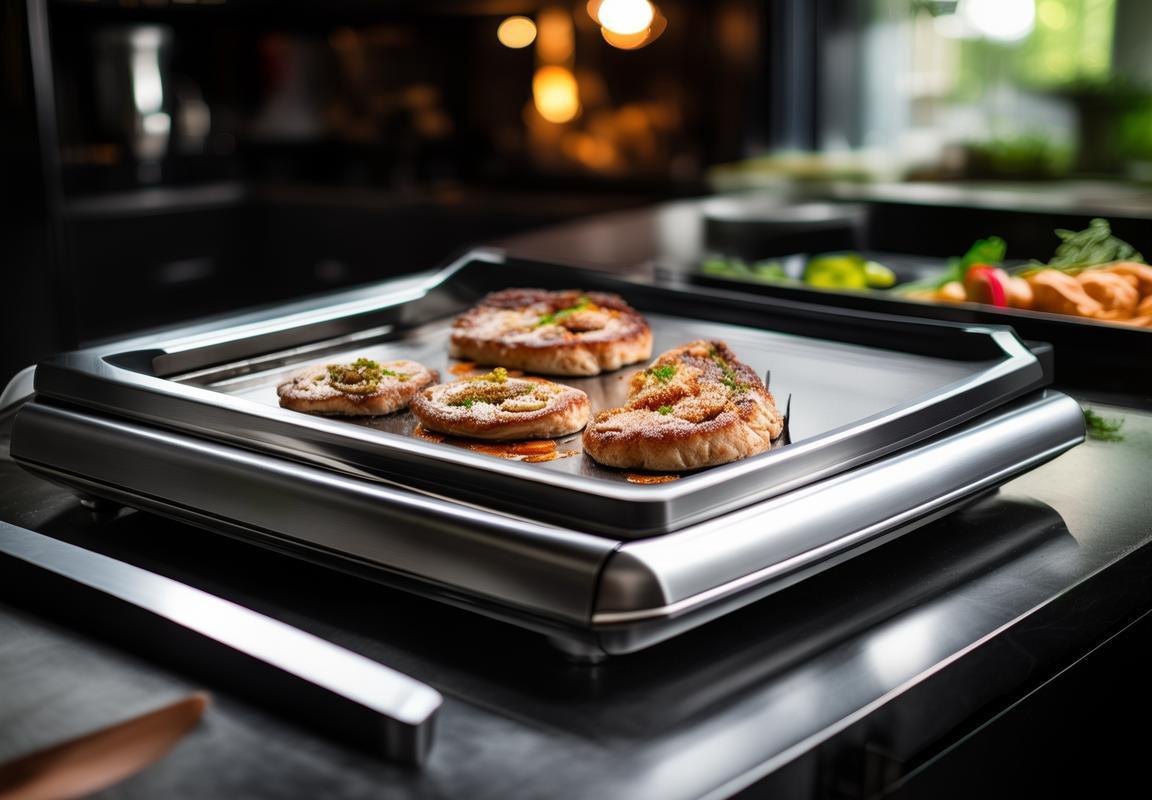
The Rise of Stainless Steel Contact Grills: A Brief History
The journey of stainless steel contact grills in the European and American markets is a testament to innovation and consumer demand. These grills, once a niche product, have now become a staple in many households. Let’s take a quick stroll through their history.
In the early 20th century, cooking technology was still in its infancy, with traditional grills being the go-to for outdoor cooking. However, the indoor cooking scene was dominated by stovetops and ovens. It wasn’t until the mid-20th century that the first contact grills started to make their appearance. These early models were often simple and made from materials like cast iron or aluminum.
The concept of a contact grill, also known as a flat-top grill, revolves around two cooking plates that press against the food, cooking it from both sides simultaneously. This method of cooking allowed for even heat distribution and a quick searing of the food, which was a novel idea at the time.
As the 1960s rolled in, European manufacturers began to experiment with different materials for these grills. It was during this period that stainless steel started to gain traction. Its durability, resistance to rust, and sleek appearance made it an appealing choice for both professional chefs and home cooks.
In the United States, the contact grill market took off in the 1970s. The advent of the George Foreman Grill, a brand that would later become synonymous with the term “contact grill,” marked a significant turning point. The George Foreman Grill was designed with a patented cooking surface that allowed for flipping the food with ease, reducing the risk of burning and making cleanup a breeze.
The 1980s saw a surge in the popularity of contact grills. As the convenience and health benefits of cooking with these grills became more apparent, consumers began to embrace the technology. The ability to cook a variety of foods, from steaks and burgers to vegetables and seafood, all on a single appliance, was a game-changer for busy families and individuals looking to save time in the kitchen.
European manufacturers, taking note of the success in the U.S., started to develop their own versions of contact grills. Brands like T-fal and Breville entered the market, offering a range of stainless steel contact grills with advanced features like adjustable heat settings and non-stick surfaces.
As the 1990s approached, the competition in the contact grill market was fierce. Companies were not only focusing on the aesthetics and functionality of their products but also on innovation. The introduction of electric grills with removable plates and integrated burners for outdoor cooking were just a few examples of the new trends emerging.
The early 2000s saw a shift in consumer preferences, with a growing emphasis on health and wellness. Contact grills, which could provide a healthier cooking alternative to traditional frying, became even more popular. The market was flooded with new designs, such as countertop grills and built-in models for kitchen islands, catering to various kitchen layouts and lifestyles.
As we entered the 2010s, technology had advanced significantly. Smart grills with digital controls and Wi-Fi connectivity were hitting the market, allowing users to monitor and adjust their cooking from their smartphones. This integration of technology with kitchen appliances was a direct response to the increasing demand for convenience and control.
Today, stainless steel contact grills continue to evolve. With the rise of gourmet cooking and the need for versatile kitchen appliances, manufacturers are pushing the boundaries of what these grills can do. Features like adjustable heat zones, steam injection for grilling and steaming simultaneously, and even Bluetooth connectivity are now part of the conversation.
In summary, the rise of stainless steel contact grills in the European and American markets has been a fascinating journey. From humble beginnings to sophisticated kitchen essentials, these grills have not only changed the way we cook but have also become a symbol of innovation and convenience in modern kitchens.
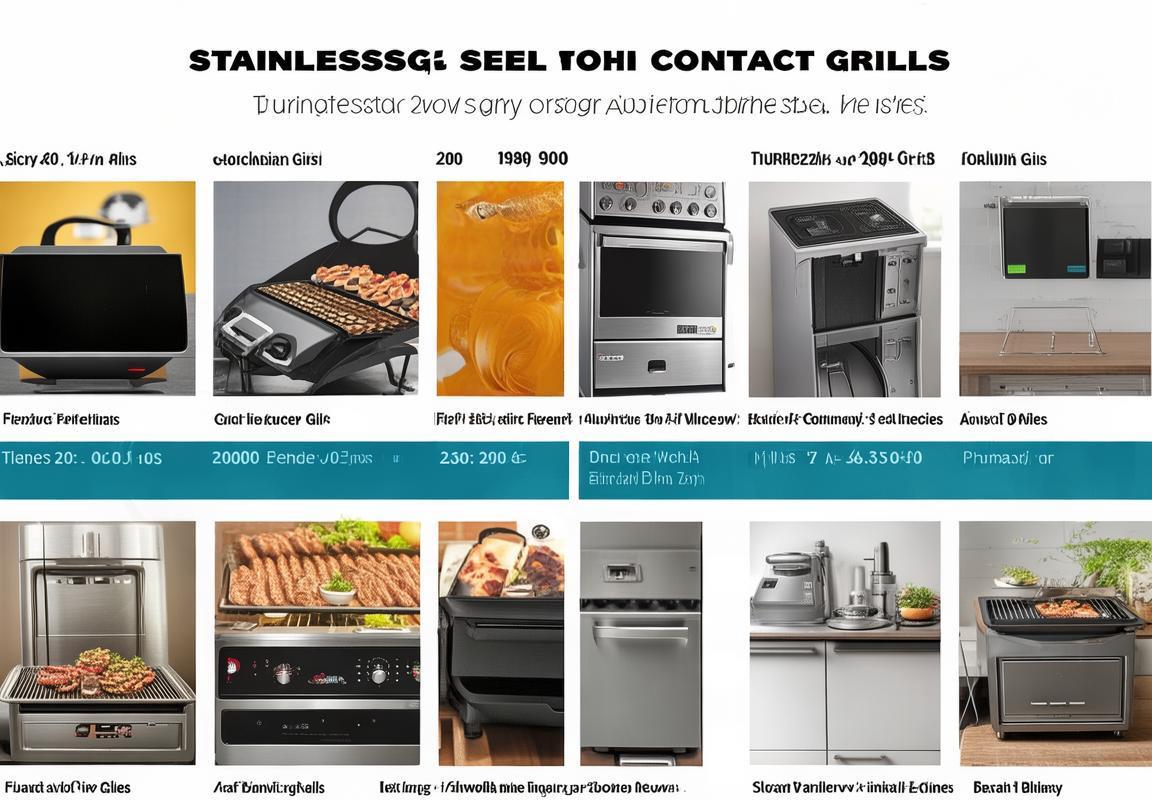
Why Stainless Steel? Understanding the Material’s Appeal
Stainless steel has long been a staple in the kitchen, prized for its durability and aesthetic appeal. This versatile material has found its way into the heart of grilling enthusiasts, particularly with the advent of stainless steel contact grills. Let’s delve into the reasons behind the material’s enduring appeal in this niche market.
The corrosion-resistant nature of stainless steel is a standout feature that makes it an ideal choice for cooking surfaces. Unlike other metals, stainless steel resists rust and tarnish, ensuring that your contact grill maintains its pristine appearance and hygiene standards over time. This resilience means that these grills can withstand the high temperatures of grilling without compromising their structural integrity.
Moreover, stainless steel’s non-reactive properties are a boon for cooking. It doesn’t impart any flavors or odors to the food, allowing the true taste of the ingredients to shine through. This is particularly important for contact grills, which are often used for delicate meats like fish and seafood, where the last thing you want is an unwanted metallic taste.
The sleek and modern look of stainless steel is another reason it’s so popular in kitchen appliances. It offers a clean, polished finish that complements a wide range of kitchen designs, from contemporary to classic. This universal appeal means that a stainless steel contact grill can be a stylish addition to any kitchen, enhancing the overall aesthetic without the need for additional decor.
In terms of maintenance, stainless steel is a breeze to clean. Its smooth surface makes it easy to wipe down, and the material’s inherent resistance to stains means that it can be kept looking like new with minimal effort. This convenience is a significant factor for busy cooks who value efficiency in their kitchen routines.
The longevity of stainless steel is also a major draw. Unlike cheaper, more delicate materials that may warp or break over time, stainless steel stands up to the test of daily use. It’s a long-term investment that can withstand the rigors of grilling without showing signs of wear, making it a cost-effective choice for those who want to enjoy their grill for years to come.
Another appealing aspect of stainless steel is its ability to retain heat. The material’s thermal conductivity ensures that the heat is evenly distributed across the cooking surface, leading to consistent and even cooking results. This is crucial for contact grills, which rely on even heat distribution to achieve that perfect grill mark and seal in the flavors.
Safety is a paramount concern in cooking, and stainless steel doesn’t disappoint in this department. It is non-toxic and doesn’t leach any harmful substances into the food, ensuring that every meal cooked on a stainless steel contact grill is safe for consumption. This is particularly important for health-conscious consumers who are wary of chemical leaching from certain materials.
The industrial applications of stainless steel have also influenced its popularity in kitchen appliances. With its robustness and reliability, stainless steel has been used in commercial kitchens for decades. This heritage of quality and performance has translated into consumer confidence, making stainless steel a material of choice for those who demand the best in their home appliances.
Lastly, the sustainability angle cannot be overlooked. Stainless steel is recyclable and can be melted down and reused without losing its properties. This eco-friendly aspect aligns with the growing consumer preference for sustainable products, contributing to the material’s appeal in the kitchen.
In summary, the appeal of stainless steel in contact grills is multifaceted. Its resistance to corrosion, non-reactive nature, aesthetic appeal, ease of maintenance, longevity, heat retention, safety, and sustainability all contribute to why stainless steel remains a top pick for grill enthusiasts and kitchen designers alike.
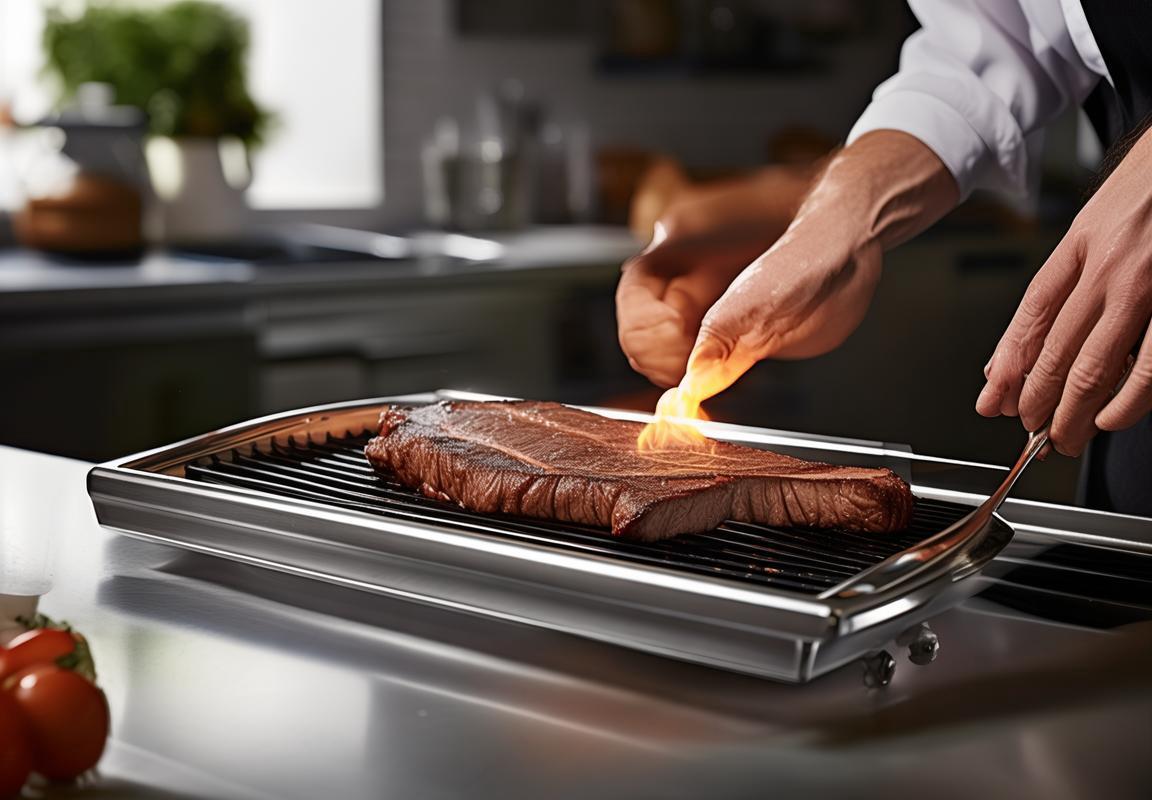
Market Dynamics: Trends in the European and American Kitchen Appliance Industry
In the European and American kitchen appliance industry, market dynamics are shaped by a myriad of factors, each contributing to the trends that define the current landscape. From technological advancements to shifting consumer preferences, here’s an exploration of the key trends that are currently influencing the market for kitchen appliances.
The surge in smart kitchen technology has been a significant trend, with consumers increasingly embracing appliances that offer connectivity and control through smartphones and voice assistants. Smart refrigerators, ovens, and even coffee makers have become more common, as they provide convenience and efficiency. This shift reflects a broader move towards automation and the integration of digital solutions into everyday life.
Energy efficiency remains a cornerstone of the kitchen appliance industry. With rising energy costs and environmental concerns, manufacturers are focusing on creating appliances that consume less power while maintaining functionality. This trend is evident in the widespread adoption of energy-saving labels and certifications, such as the Energy Star rating in the United States and the A+++ rating in Europe.
Sustainability is another driving force, as consumers become more aware of the environmental impact of their purchases. Eco-friendly materials, such as recycled plastics and sustainable wood, are being used in the construction of kitchen appliances. Additionally, appliances designed for longevity and repairability are gaining traction, as they reduce waste and lower the carbon footprint over their lifespan.
The trend towards healthier eating habits has also influenced the kitchen appliance market. Appliances that promote cooking methods like steam, air frying, and slow cooking are becoming more popular, as they are seen as healthier alternatives to traditional frying and high-heat cooking. This shift is supported by the growing number of health-conscious consumers who are looking for ways to prepare nutritious meals at home.
Innovation in cooking technology is also a key trend. Induction cooktops, for example, have seen a rise in popularity due to their quick heating, energy efficiency, and safety features. These cooktops are replacing traditional electric and gas models in many homes, as they provide a more precise and responsive cooking experience.
The rise of small appliances has been a notable trend, with consumers seeking convenience and versatility. Single-serve coffee makers, personal blenders, and compact food processors are just a few examples of appliances that cater to the need for quick, easy-to-use kitchen tools. This trend is particularly strong in urban areas where space is limited, and individuals are looking for multifunctional solutions.
The kitchen appliance market is also seeing a rise in personalized and customizable products. Consumers are no longer satisfied with one-size-fits-all appliances; they want products that can be tailored to their specific needs and preferences. This includes everything from color options and finishes to specialized features designed for specific dietary requirements or cooking styles.
The integration of kitchen appliances into the overall home design is another important trend. As kitchens become the heart of the home, appliances are being designed not only for functionality but also for aesthetic appeal. Modern appliances with sleek designs and smart features are becoming a central part of kitchen renovations and new builds, reflecting a desire for cohesive, stylish living spaces.
Lastly, the global kitchen appliance market is experiencing a surge in cross-border e-commerce. Online shopping has made it easier for consumers to access a wider range of products from different parts of the world. This has led to increased competition and has forced local manufacturers to innovate and improve their offerings to remain competitive.
These trends in the European and American kitchen appliance industry reflect a dynamic and evolving market that is responding to the changing needs and values of consumers. As technology continues to advance and consumer preferences shift, the industry will likely see further innovations and changes in the years to come.
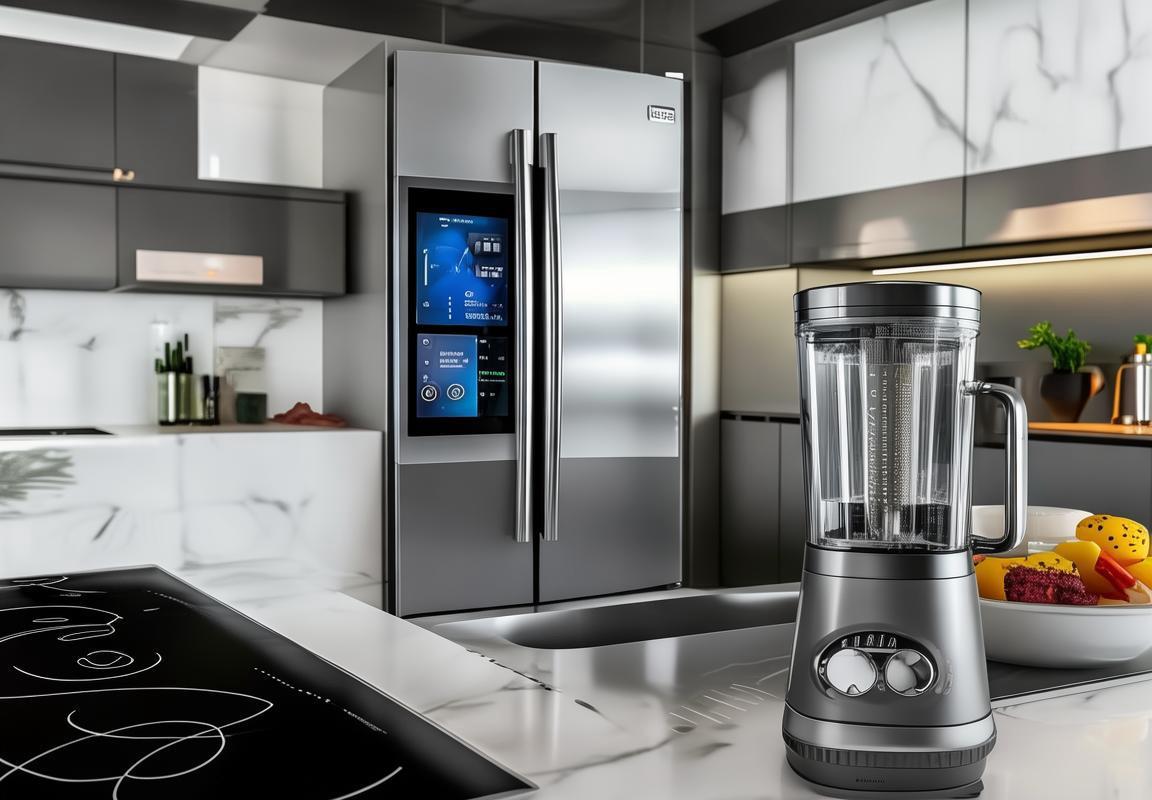
Consumer Preferences: What Drives the Demand for Stainless Steel Contact Grills?
The demand for stainless steel contact grills has surged in both the European and American markets, driven by a combination of consumer preferences that reflect the evolving landscape of kitchen appliance trends. Here’s a delve into the factors that fuel this demand:
-
Versatility in Cooking Techniques: Consumers are seeking kitchen appliances that offer a variety of cooking methods. Stainless steel contact grills provide not only grilling but also searing, which is a highly sought-after feature for those looking to replicate the flavors of outdoor cooking indoors.
-
Ease of Use: Modern lifestyles are fast-paced, and convenience is a key factor in kitchen appliance choices. The simplicity of a contact grill, with its straightforward operation and minimal cleanup, appeals to busy individuals and families who value efficiency in their cooking routines.
-
Health and Wellness Trends: There’s a growing emphasis on health and wellness, with many consumers opting for cooking methods that reduce oil usage. Stainless steel contact grills allow for healthier cooking alternatives by minimizing the need for added fats, aligning with the health-conscious consumer’s preferences.
-
Stainless Steel’s Durability and Maintenance: The material’s reputation for durability and ease of maintenance is a significant draw. Stainless steel is resistant to rust and corrosion, and its sleek finish means it’s easy to clean and maintain, factors that are increasingly important to consumers who prioritize long-term investment over price.
-
Design and Style: Kitchen aesthetics have become a major consideration for many homeowners. The clean, modern look of stainless steel aligns with contemporary kitchen designs, making these grills not just functional but also stylish additions to any kitchen space.
-
Cooking Experience and Quality: Consumers are willing to pay more for appliances that enhance their cooking experience. The even heat distribution and consistent cooking results provided by contact grills contribute to a higher quality of cooking, which is a significant driver of demand.
-
Brand Perception and Trust: The perception of certain brands and the trust they inspire also play a role in consumer preferences. Many consumers are drawn to established brands that have a reputation for producing high-quality kitchen appliances, and stainless steel contact grills from these brands are often seen as a mark of quality and reliability.
-
Cooking for Social Gatherings: With the rise of hosting and social gatherings, appliances that can handle large quantities of food are in demand. Stainless steel contact grills are well-suited for these occasions, as they can cook a variety of foods simultaneously, making them a favorite among hosts.
-
Outdoor Cooking Enthusiasts: Even though contact grills are primarily used indoors, their ability to mimic the outdoor grilling experience is a draw for those who enjoy cooking outdoors but may not have the space or equipment to do so year-round.
-
Technological Integration: The integration of technology into kitchen appliances has become a norm. Features like digital temperature controls, non-stick surfaces, and programmable settings in stainless steel contact grills cater to tech-savvy consumers who appreciate the fusion of technology and convenience.
-
Influence of Media and Influencers: The rise of social media and cooking influencers has also had a significant impact on consumer preferences. These platforms often showcase the benefits of stainless steel contact grills, from their ease of use to their ability to produce restaurant-quality results at home.
-
Eco-friendly and Sustainable Choices: As sustainability becomes a more prominent concern, consumers are gravitating towards products that are environmentally friendly. Stainless steel is recyclable and has a lower carbon footprint compared to some other materials, making it an attractive choice for eco-conscious consumers.
These factors collectively contribute to the demand for stainless steel contact grills, highlighting the appliance’s versatility, convenience, and alignment with current consumer values and trends.
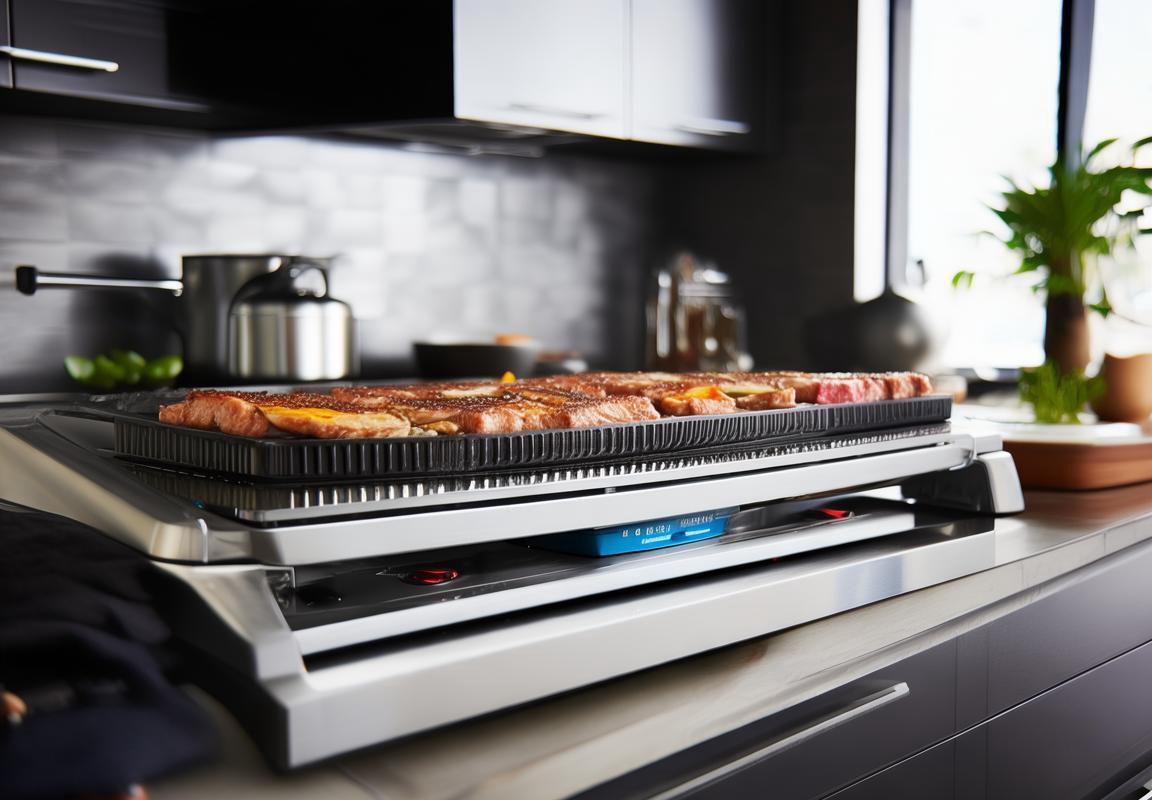
Innovations in Design and Technology: The Evolution of Contact Grills
The world of kitchen appliances has seen a steady evolution, with innovations shaping how we cook and entertain. Contact grills, a staple in many kitchens, have undergone significant changes in design and technology. Here’s a closer look at how these grills have evolved:
Grills have traditionally been designed for open flame or direct heat cooking, but contact grills introduced a new dimension with their flat surfaces. These surfaces, often made of cast iron or stainless steel, allowed for even heat distribution and a unique searing pattern that was both attractive and functional. The initial models were straightforward, focusing on basic cooking capabilities.
Over time, the design of contact grills began to reflect a deeper understanding of consumer needs. Non-stick coatings became a standard feature, making cleaning easier and reducing the risk of food sticking to the surface. The addition of adjustable heat controls allowed users to fine-tune the cooking temperature, catering to a wide range of recipes and preferences.
The integration of digital temperature controls marked a significant leap in technology. These controls provided precise temperature management, ensuring that users could achieve the perfect sear every time. The digital display made it simple to monitor the grill’s temperature, offering a level of control that was previously unattainable with older models.
Safety features also became a focal point in the evolution of contact grills. Anti-lock lid mechanisms prevented the grill from accidentally closing, reducing the risk of burns and injuries. Some models even included safety locks that could be engaged during cooking, ensuring that the grill remained secure and stable.
The compact size of early contact grills made them ideal for small kitchens or those with limited counter space. However, as consumer tastes evolved, so did the size and versatility of these grills. Larger models were introduced, capable of cooking larger quantities of food, making them suitable for families or those who entertain often.
The integration of multiple cooking surfaces within a single unit was another innovation. Some contact grills now come with a reversible top, allowing users to switch between a flat top for cooking pancakes or sandwiches and a ridged surface for steaks or burgers. This dual-purpose design maximized the functionality of the appliance without requiring separate units.
Smart technology has also made its way into contact grills. Some models are now equipped with Wi-Fi capabilities, allowing users to control the grill remotely via a smartphone app. This feature is particularly useful for those who want to start cooking before arriving home or for those who prefer to multitask in the kitchen.
The design of contact grills has also become more user-friendly. Removable drip trays and easy-to-clean surfaces have become standard, reducing the time and effort required to maintain the grill. The inclusion of safety features like cool-touch handles and non-slip feet ensures that users can handle the grill safely and securely.
Innovation in contact grill technology hasn’t stopped there. Some models now offer variable cooking times and temperatures, allowing for even more precise control over the cooking process. Others have integrated sensors that monitor food temperature, ensuring that it’s cooked to the perfect degree.
The evolution of contact grills is a testament to how technology and design can work together to improve everyday life. From their humble beginnings as simple cooking tools to the sophisticated appliances they are today, contact grills have come a long way. Their ability to adapt to changing consumer preferences and technological advancements has solidified their place in the kitchen, making them a staple for anyone who appreciates a good meal and a well-designed appliance.
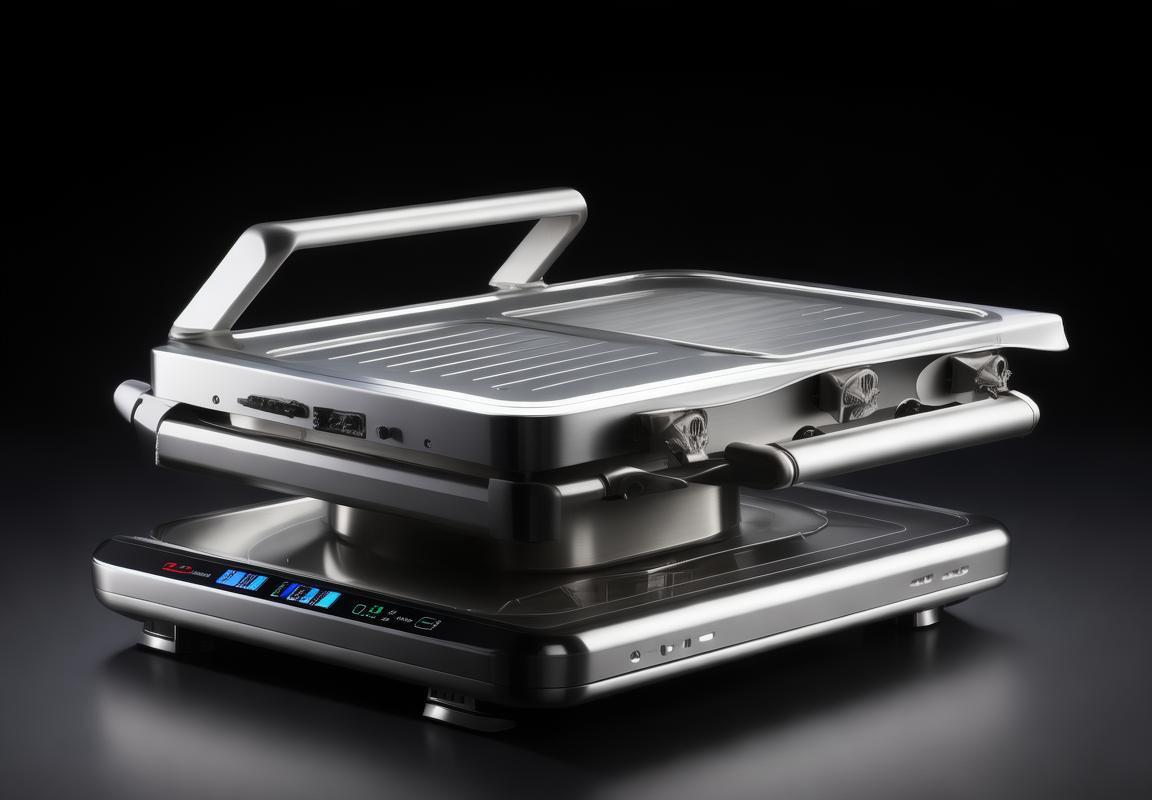
Comparison with Other Grill Types: The Unique Selling Points of Stainless Steel Grills
Stainless steel contact grills have carved out a niche in the grill market, offering a unique blend of convenience and culinary excellence. Here’s a closer look at what sets them apart from other grill types:
Grill Surface QualityThe smooth, flat surface of a stainless steel contact grill is a stark contrast to the textured grates of traditional charcoal or gas grills. This even surface ensures that food cooks uniformly, with minimal risk of burning or charring. The polished finish of stainless steel also makes it easier to clean and maintain, which is a significant draw for busy households and those who prefer a low-maintenance cooking solution.
Ease of UseContact grills are designed for simplicity. With their flat surfaces, they eliminate the need for flipping or turning food, which can be a hassle on traditional grills. The even distribution of heat across the grill plate means that food cooks quickly and efficiently, often with less mess and effort. This ease of use is particularly appealing to those who may not have the time or patience for the more hands-on approach of traditional grilling.
Consistent Cooking TemperaturesOne of the challenges of grilling on a traditional grill is maintaining consistent temperatures. With a stainless steel contact grill, the even heat distribution ensures that the cooking temperature remains stable throughout the cooking process. This consistency is crucial for achieving the perfect sear on steaks, burgers, and other grilled foods, without the guesswork that comes with adjusting flames or coals.
Healthier Cooking OptionStainless steel contact grills are often considered a healthier cooking option compared to traditional grilling methods. Since they cook food at lower temperatures and with less oil, there’s less risk of developing harmful compounds like heterocyclic amines (HCAs) and polycyclic aromatic hydrocarbons (PAHs). This makes stainless steel grills a preferred choice for health-conscious consumers looking to enjoy grilled flavors without the potential health risks associated with high-heat grilling.
Versatility in Cooking MethodsWhile contact grills are known for their ability to sear and brown food, modern models offer a range of cooking methods. Some models can be adjusted to cook at different temperatures, allowing for grilling, sautéing, and even baking. This versatility means that a stainless steel contact grill can often replace several kitchen appliances, from a skillet to an oven, saving space and reducing the need for multiple cooking tools.
No Flavors from Fuel or CharcoalTraditional grills often impart a distinct flavor to food, which can be both a pro and a con. For those who prefer a clean, neutral flavor profile, stainless steel contact grills are ideal. They don’t rely on charcoal or wood chips for flavor, so the taste of the food is not influenced by the type of fuel used. This is particularly beneficial for those who want to enjoy the natural flavors of the ingredients without any additional influence from the grill.
Durability and LongevityStainless steel is renowned for its durability and resistance to corrosion. A well-maintained stainless steel contact grill can last for many years, making it a sound investment for any kitchen. The material’s strength means that the grill can withstand heavy use without warping or bending, ensuring a long-lasting cooking experience.
Modern Design and AestheticsIn addition to their functional benefits, stainless steel contact grills are also visually appealing. Their sleek, modern design fits well in contemporary kitchens and can even serve as a stylish centerpiece. The clean lines and polished finish of stainless steel grills contribute to a kitchen’s overall aesthetic, making them a popular choice among those who value both form and function.
In conclusion, the unique selling points of stainless steel contact grills lie in their ease of use, consistent cooking temperatures, healthier cooking option, versatility, lack of flavor interference, durability, and aesthetic appeal. These factors have contributed to their growing popularity in the European and American kitchen appliance industry, where consumers are increasingly seeking efficient, convenient, and high-quality cooking solutions.
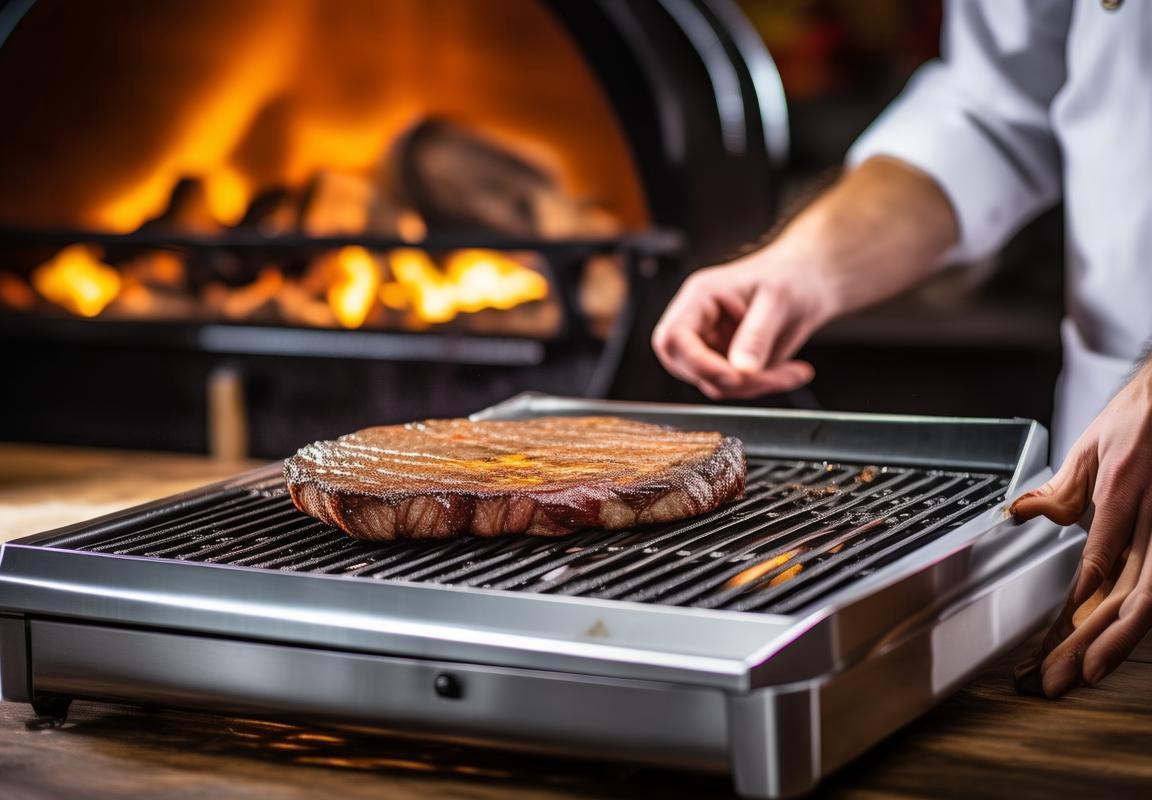
Distribution Channels: How Stainless Steel Grills Reach the Consumer
In today’s market, the distribution channels for stainless steel grills play a pivotal role in ensuring these appliances reach consumers effectively. From e-commerce giants to specialty kitchen stores, here’s an exploration of how these grills navigate the marketplace.
Retailers and Department StoresRetailers and department stores often serve as the cornerstone of distribution for stainless steel grills. These establishments provide customers with a physical space to view and touch the products, which can be particularly reassuring for those who prefer a tactile shopping experience. Stores like Home Depot and Lowe’s in the U.S. offer a wide variety of stainless steel grills, catering to different budgets and preferences.
Online MarketplacesThe rise of online marketplaces like Amazon has revolutionized the way consumers purchase appliances. These platforms offer an extensive range of stainless steel grills from various brands and price points. Customers can read reviews, compare features, and make purchases without leaving their homes. The convenience of online shopping combined with competitive pricing and fast delivery options has made online marketplaces a popular choice for many consumers.
Specialty Kitchen StoresSpecialty kitchen stores focus exclusively on kitchenware, including high-end stainless steel grills. These stores often have knowledgeable staff who can provide detailed information and assistance in choosing the right grill. They may also offer additional services such as assembly or demonstrations, which can be beneficial for those looking for a premium shopping experience.
Home Appliance ShowroomsHome appliance showrooms offer a space where customers can see and operate a variety of grills, including stainless steel models. These showrooms are particularly useful for those who want to compare different brands and features side by side. The interactive nature of these showrooms can help consumers make informed decisions and often come with the added benefit of professional advice.
Dedicated Home Appliance RetailersThere are retailers that specialize solely in home appliances, including cookware and grills. These stores are known for their extensive inventory and expertise in the field. They may carry a narrower selection of stainless steel grills compared to larger retailers, but their focus allows them to offer in-depth knowledge and support to customers.
Wholesale and Bulk DistributorsFor large-scale purchases or for businesses looking to sell stainless steel grills, wholesale and bulk distributors play a crucial role. These distributors work with manufacturers to supply grills to retailers, restaurants, and even event planners. Their ability to offer large quantities at competitive prices makes them a go-to source for bulk orders.
Direct Sales from ManufacturersSome manufacturers of stainless steel grills choose to sell their products directly to consumers. This direct-to-consumer model can sometimes result in lower prices and a more personalized shopping experience. Customers might receive a high level of service and support directly from the source, and manufacturers can gather valuable feedback directly from consumers.
Collaborations with Local Events and FairsManufacturers and retailers of stainless steel grills often participate in local events and fairs to showcase their products. This not only helps in reaching new customers but also creates a buzz around the brand. These events can range from small community gatherings to large home and garden shows, where potential buyers can see and interact with the grills in person.
Cross-Promotions and Affiliate MarketingTo expand their reach, some brands engage in cross-promotions with other retailers or online platforms. Affiliate marketing can also be a strategy where partners promote each other’s products, leading customers to purchase stainless steel grills through multiple channels.
Social Media and Influencer PartnershipsSocial media has become a powerful tool for marketing and distribution. Brands often collaborate with influencers to showcase their stainless steel grills to a broader audience. These partnerships can lead to increased brand visibility and sales, as influencers tap into their followers’ trust and interest.
The distribution channels for stainless steel grills are diverse and dynamic, reflecting the varied needs and preferences of consumers. Whether through traditional retail, online marketplaces, or direct sales, these channels ensure that these grills reach customers in a way that suits their shopping habits and budgets.
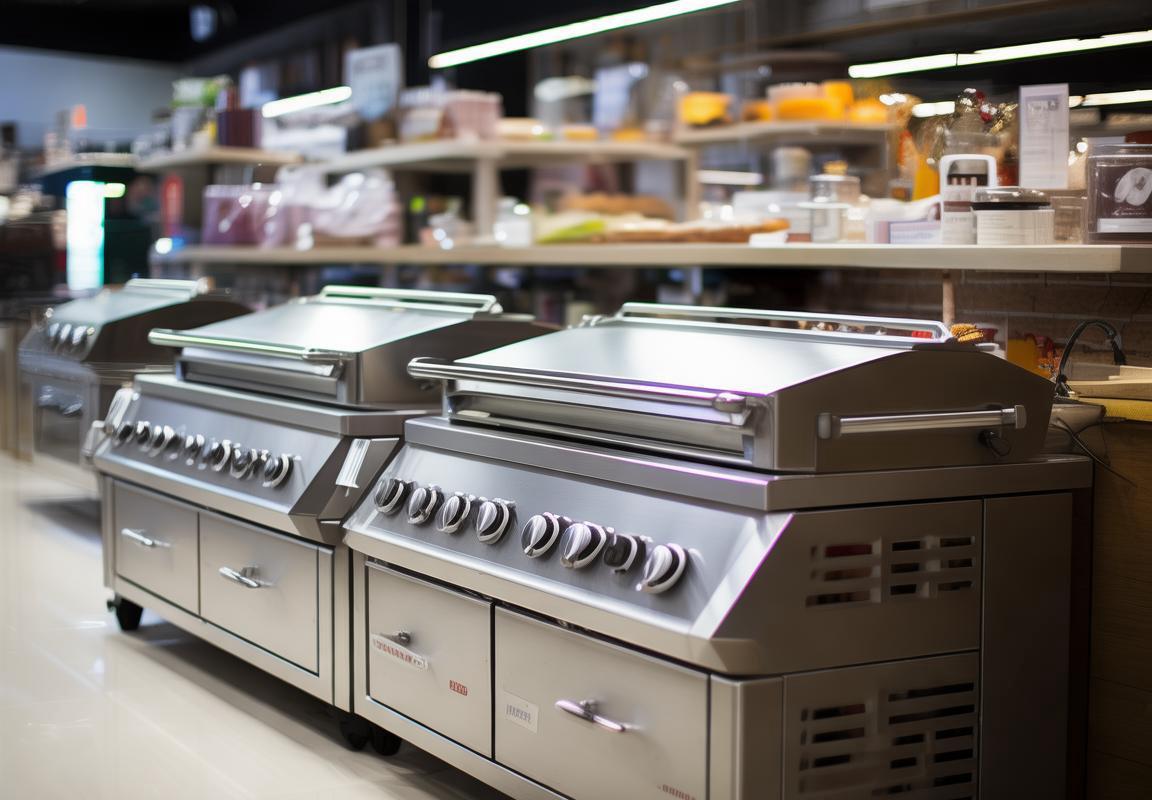
Regulatory Environment: Compliance and Safety Standards
Stainless steel grills have become a staple in modern kitchens, not just for their durability but also for the safety and compliance they offer. The regulatory environment plays a pivotal role in ensuring that these appliances meet stringent safety standards, both in Europe and the United States. Here’s a closer look at the compliance and safety standards that govern the production and distribution of stainless steel grills.
The European Union (EU) has a comprehensive set of regulations that cover the manufacturing and sale of kitchen appliances, including grills. One of the key regulations is the General Product Safety Directive (GPSD), which requires that all products placed on the market are safe and do not pose a risk to consumers. This directive sets out the basic safety requirements that all products must meet, including the absence of hazardous substances, proper design, and adequate labeling.
In the United States, the Consumer Product Safety Commission (CPSC) is responsible for protecting the public from unreasonable risks of serious injury or death from thousands of types of consumer products. For stainless steel grills, the CPSC enforces safety standards that cover electrical safety, flame safety, and structural integrity.
One of the critical aspects of compliance is the use of materials that are safe for food contact. Stainless steel, being a non-reactive material, is ideal for grill surfaces. It does not leach harmful chemicals into the food, making it a preferred choice for health-conscious consumers. The European Food Safety Authority (EFSA) and the U.S. Food and Drug Administration (FDA) both have guidelines on the use of materials in food contact applications, ensuring that stainless steel grills adhere to these standards.
Another important aspect is the thermal performance of the grill. Grills must be able to maintain a consistent temperature without overheating or producing harmful fumes. The EU’s EN 60335-2-30 standard, for instance, covers the safety of household and similar electrical appliances used for cooking, including grills. It specifies the requirements for the design, construction, and performance of these appliances to ensure they are safe to use.
Safety features such as automatic shut-off mechanisms, non-slip bases, and cool-to-the-touch handles are also crucial in ensuring compliance with safety standards. These features reduce the risk of burns, electrical shocks, and other accidents that could occur while using a grill.
In addition to the material and design requirements, there are also labeling and marking regulations. Grills must be clearly marked with the manufacturer’s name, model number, and any relevant warnings or instructions for safe use. The EU’s Regulation (EC) No 1272⁄2008 on the classification, labeling, and packaging of substances and mixtures, often referred to as the CLP Regulation, provides the framework for the classification and labeling of hazardous substances, including those used in the manufacturing of stainless steel grills.
The regulatory environment also includes regular inspections and audits to ensure ongoing compliance. Manufacturers must demonstrate that their products meet the latest safety standards through certifications and testing. In the EU, this often involves obtaining the CE marking, which signifies that a product meets all the necessary EU health, safety, and environmental requirements.
In the U.S., third-party certification bodies, such as Underwriters Laboratories (UL) or Intertek, provide safety certifications that manufacturers can use to demonstrate compliance with the CPSC’s standards.
The safety and compliance standards for stainless steel grills are not just about meeting legal requirements; they are about building trust with consumers. By adhering to these standards, manufacturers can assure customers that their products are safe to use, which is particularly important for appliances that come into direct contact with food.
In conclusion, the regulatory environment for stainless steel grills is robust, with clear guidelines on material safety, design, and performance. Compliance with these standards is not only a legal obligation but also a testament to the manufacturer’s commitment to consumer safety and quality. As the market for kitchen appliances continues to evolve, so too will the safety standards, ensuring that stainless steel grills remain a reliable and safe choice for consumers worldwide.
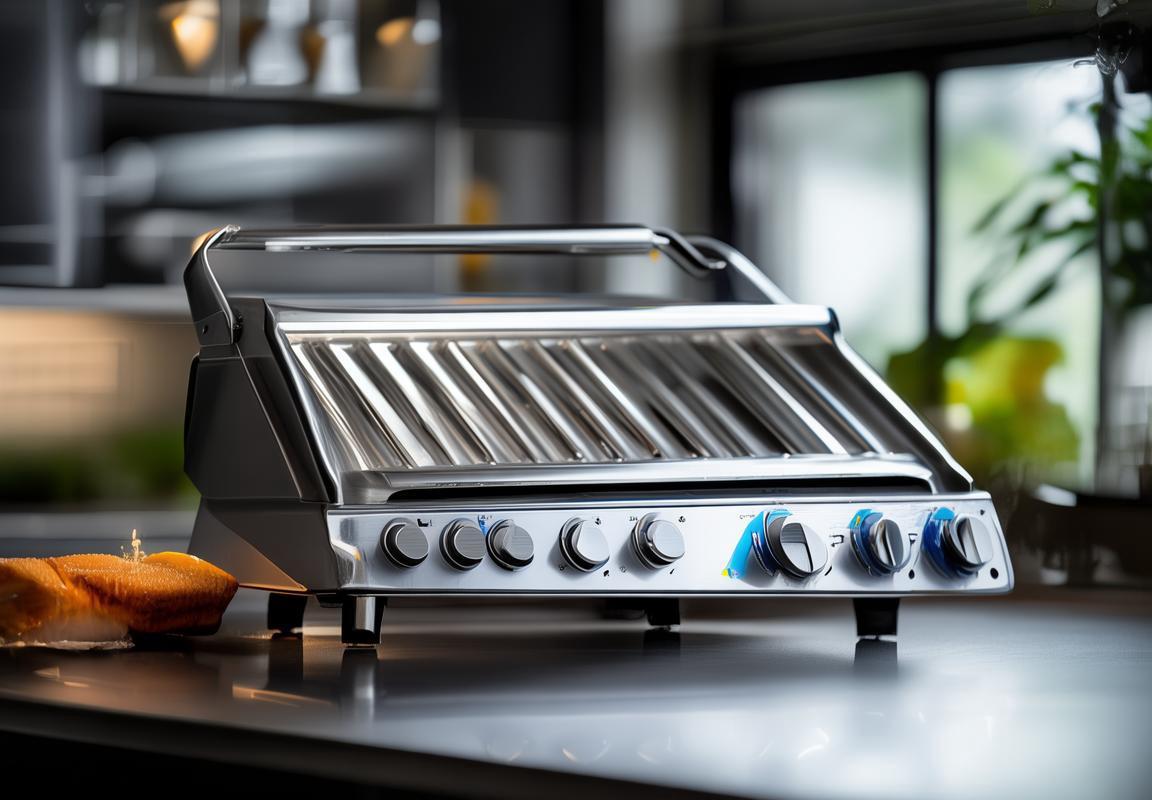
Future Outlook: Predictions for the Next Decade in the Stainless Steel Contact Grill Market
The stainless steel contact grill market has been witnessing a surge in popularity, and as we look ahead, it’s clear that several factors are shaping its trajectory. From technological advancements to changing consumer preferences, here are some predictions for the next decade that could redefine the market:
Customization and PersonalizationManufacturers are likely to focus on offering more customized and personalized options to cater to diverse consumer needs. This could include adjustable heat settings, various grill patterns, and even modular designs that allow for easy upgrades or replacements of specific grill parts.
Smart IntegrationWith the rise of smart home technology, we can expect to see stainless steel contact grills that integrate with home automation systems. These grills might feature Wi-Fi connectivity, allowing users to control their cooking temperature and time remotely via smartphone apps. Smart sensors could also monitor food doneness and provide real-time feedback.
Sustainability FocusAs environmental concerns grow, the stainless steel contact grill market may see a shift towards more sustainable practices. This could involve using recycled materials for the grills, energy-efficient designs that reduce power consumption, and eco-friendly packaging.
Health and HygieneHealth-conscious consumers are driving demand for kitchen appliances that promote hygiene. Stainless steel grills, known for their easy-to-clean surfaces, are already popular. Future models might incorporate antimicrobial coatings to further enhance food safety and reduce the risk of cross-contamination.
Global ExpansionThe market for stainless steel contact grills is not limited to Europe and America. As these markets mature, we may see a significant expansion into emerging regions like Asia and South America. Cultural preferences and local cooking habits will influence the design and features of these grills in these areas.
Innovation in Cooking TechniquesGrill manufacturers are continuously exploring new cooking techniques that can be integrated into contact grills. This could involve incorporating steam cooking capabilities, infrared heating elements for faster cooking times, or even the ability to sear, grill, and bake simultaneously.
Competitive PricingAs the market becomes more saturated, competitive pricing strategies will become crucial. Manufacturers may offer more value for money by including additional features at no extra cost or by offering financing options that make high-end models more accessible to a wider audience.
Marketing StrategiesMarketing will play a significant role in shaping the future of the stainless steel contact grill market. Brands that effectively communicate the benefits of their products and engage with consumers through social media and influencer partnerships will likely gain a competitive edge.
Regulatory ComplianceStaying compliant with international safety standards will be essential. This includes not only the grill itself but also the materials used in its construction and any accessories that come with it. Compliance with these standards will be a key factor in consumer trust and market penetration.
Technological PartnershipsCollaborations with technology companies could lead to groundbreaking innovations. For example, partnerships with AI and machine learning firms might result in grills that can predict cooking times and temperatures based on user data and food type.
Cultural AdaptationUnderstanding and adapting to different cultural preferences will be vital for companies looking to expand their market share. This could mean tailoring grill designs to specific cooking styles or offering a variety of grill patterns that cater to different types of food.
In summary, the stainless steel contact grill market is poised for significant growth and change in the next decade. As consumer demands evolve and technology advances, the market will need to adapt to offer more personalized, health-conscious, and technologically advanced products. The companies that successfully navigate these changes will be well-positioned to lead the market in the coming years.